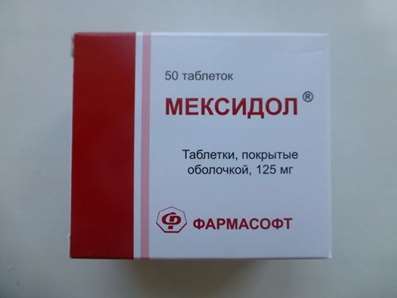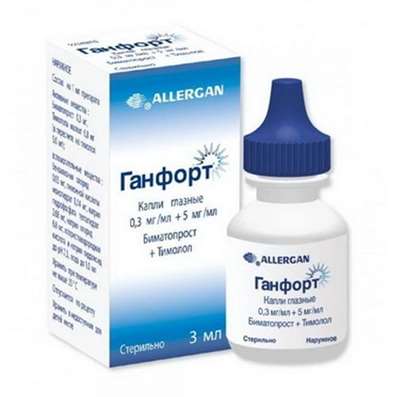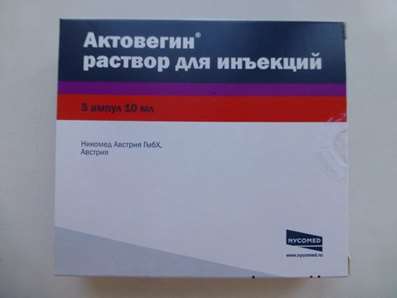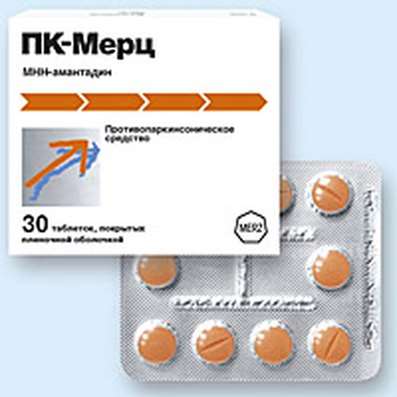Instruction for use: Sevorane
I want this, give me price
Dosage form: inhalation liquid for vials
Active substance: Sevoflurane
ATX
N01AB08 Sevoflurane
Pharmacological group:
Anesthetic means
Composition
Fluid for inhalation 1 fl.
active substance:
sevoflurane 100%
Description of dosage form
The liquid for inhalation is clear, colorless, volatile.
Characteristic
Sevoflurane is not a flammable liquid for general anesthesia, which is used with an evaporator. It is a fluorinated derivative of methyl isopropyl ether. Chemical name: 1,1,1,3,3,3-hexafluoro-2- (fluoromethoxy) -propyl. Molecular weight: - 200.05.
Sevoflurane has the following physical and chemical properties:
Estimated vapor pressure in mm Hg. article ** 157 mm Hg. Art. at 20 ° C; 197 mm Hg. Art. at 25 ° C; 317 mm Hg. Art. at 36 ° C
** Equation for calculation of vapor pressure, mm Hg. p. log10P = A + B / T, where:
A = 8,086, B = -1726.68, T = ° C + 273.16 ° K (Kelvin).
Distribution coefficients at 37 ° C
Blood / gas - 0,63-0,69
Water / gas - 0.36
Olive oil / gas - 47,2-53,9.
The brain / gas is 1.15.
Average component / gas partition coefficients at 25 ° C for polymers commonly used for medical reasons:
Conductive rubber - 14.
Butyl rubber - 7,7.
PVC - 17,4.
PE - 1,3.
Sevoflurane is not flammable or explosive, which meets the requirements of the International Electrotechnical Commission 601-2-13.
Sevoflurane does not contain additives or chemical stabilizers. Sevoflurane is not corrosive. It mixes with ethanol, ether, chloroform, and benzene and is poorly soluble in water.
Decomposition products of sevoflurane
Sevoflurane remains stable if stored under normal indoor lighting. In the presence of strong acids or under the influence of heat, there is no significant decomposition of sevoflurane. Sevoflurane does not cause corrosion of stainless steel, copper, aluminum, copper, coated with nickel, copper coated with chromium, and copper-beryllium alloy.
Anesthetic can be destroyed by contact with a CO2 absorber in the anesthesia machine. When using fresh absorbers, according to the recommendations, the destruction of sevoflurane is minimal, the decay products are not determined and are not toxic. The destruction of sevoflurane and the formation of degradation products increases with an increase in the absorber temperature, using a dry absorber (especially a potassium hydroxide-containing hydroxide, for example BaralymeŽ), increasing the concentration of sevoflurane and reducing the flow of fresh gas. The destruction of sevoflurane under the action of alkalis proceeds along two paths. In the first, hydrogen fluoride is split off from the molecule and pentofluoroisopropyl fluoromethyl ether (compound A) is formed. Destruction of sevoflurane in the second way occurs only in the presence of a dry absorber CO2, while sevoflurane is converted to hexafluoroisopropanol and formaldehyde. Hexafluoroisopropanol is not active, not genotoxic, quickly combines with glucuronic acid and is excreted from the body, the toxicity is comparable to the toxicity of sevoflurane. Formaldehyde is present in the reactions of normal metabolism and, in contact with the dried sorbent, in turn, decomposes to methanol and formate. From formate, carbon monoxide is subsequently formed under the influence of high temperature. Methanol can be reacted with Compound A, as a result of methoxylation, Compound B is further formed. Upon further cleavage of hydrogen fluoride from compound B, compounds C, D and E are formed. Formaldehyde, methanol, carbon monoxide, Compound A and, optionally, certain degradation products, Compounds B, C and D can be formed by contacting the preparation with a very dry absorber, especially if it contains potassium hydroxide (eg BaralymeŽ).
The decomposition of sevoflurane upon interaction with Lewis acids
The preparation contains at least 300 ppm of water as a reaction inhibitor with Lewis acids.
Pharmachologic effect
Pharmacological action - anesthesia inhalation.
Pharmacodynamics
Sevoflurane provides a quick introduction to anesthesia and rapid exit from it. The depth of anesthesia can vary rapidly depending on the change in the concentration of sevoflurane in the inspired mixture.
The induction of anesthesia with sevoflurane is accompanied by a slightly pronounced excitation or minimal signs of irritation of the upper respiratory tract, does not cause excessive secretion in the tracheobronchial tree and stimulation of the CNS. Like other powerful agents for inhalation anesthesia, sevoflurane causes a dose-dependent suppression of respiratory function and a decrease in blood pressure. In studies in children, it was shown that the occurrence of cough was statistically less frequent with the use of masked introductory anesthesia with sevoflurane than with halothane. The threshold of arrhythmogenic effect of epinephrine with the use of sevoflurane is the same as with isoflurane and higher than with halothane. The incidence of myocardial ischemia and myocardial infarction in patients with risk factors for these diseases is comparable with the use of sevoflurane and isoflurane.
Influence on blood circulation in the brain (ICP, cerebral blood flow, cerebral oxygen metabolism, cerebral perfusion pressure) is also comparable in sevoflurane and isoflurane. Sevoflurane has minimal effect on ICP and does not reduce the response to CO2. Sevoflurane does not affect the concentration function of the kidneys, even with prolonged anesthesia (up to about 9 hours).
The minimum alveolar concentration (MAC) is the concentration at which 50% of patients do not have a motor response to a single irritation (incision of the skin). MAQ of sevoflurane in different age groups are given in the section "Method of administration and dose", the MAQ of sevoflurane in oxygen is 2.05% for a 40-year-old adult. MAK sevoflurana, like other halogenated preparations, decreases with age and with the addition of dinitrogen oxide.
Pharmacokinetics
Solubility
The low solubility of sevoflurane in the blood provides a rapid increase in alveolar concentration when administered to general anesthesia and a rapid decrease after discontinuation of inhalation. The ratio of alveolar concentration at the end of inspiration and concentration in the inhaled mixture 30 minutes after the inhalation of sevoflurane was 0.85. In the elimination phase, the ratio of alveolar concentrations after 5 min was 0.15.
Distribution and Metabolism
The rapid removal of sevoflurane from the lungs minimizes the metabolism of the drug. In humans less than 5% of the absorbed dose of sevoflurane is metabolized by cytochrome P450 (isoenzyme CYP2E1) into hexafluoroisopropanol with the release of inorganic fluorine and carbon dioxide (or one carbon dioxide). The resulting hexafluoroisopropanol is not active, not genotoxic, rapidly combines with glucuronic acid and is excreted from the body by the kidneys, the toxicity is comparable to the toxicity of sevoflurane. Other ways of metabolism of sevoflurane are not established. It is the only fluorinated volatile agent for anesthesia, not metabolized to trifluoroacetic acid.
The concentration of fluoride ions depends on the duration of general anesthesia, the concentration of sevoflurane administered and the composition of the mixture for anesthesia. Barbiturates do not cause defluorination of sevoflurane.
Approximately 7% of adults who had in clinical studies measured concentrations of inorganic fluoride, they exceeded 50 μmol / l; clinically significant changes in kidney function in none of these patients have not been identified.
Indications for the drug Sevorane
Introductory and supportive general anesthesia in adults and children in surgical operations inpatient and outpatient settings.
Contraindications
increased sensitivity to sevoflurane or other halogenated preparations;
confirmed or suspected genetic predisposition to the development of malignant hyperthermia;
the period of lactation.
With caution: kidney failure; intracranial hypertension; neuromuscular diseases and ischemic heart disease (see "Special instructions").
Application in pregnancy and lactation
In reproductive studies in animals, sevoflurane in doses up to 1 MAK had no effect on reproductive function and damaging effects on the fetus. Studies in pregnant women have not been conducted.
Sevoflurane can be used during pregnancy only if the potential benefit to the mother justifies the possible risk to the fetus.
Since there is no information on breeding sevoflurane with breast milk, breastfeeding women should refrain from breastfeeding during the period of drug use and within 48 hours after use.
Childbirth
The clinical study demonstrated the safety of sevoflurane for the mother and newborn when used for general anesthesia in cesarean section. The safety of sevoflurane during labor and during normal delivery is not established.
Side effects
Like all powerful agents for inhalation anesthesia, sevoflurane can cause a dose-dependent inhibition of heart and respiratory function. Most adverse reactions are mild or moderate and transient. Often after the operation and general anesthesia, nausea and vomiting are noted, which may be associated with inhalation anesthetics, other medications prescribed intraoperatively or in the postoperative period, as well as with the patient's response to surgical intervention.
The most frequent side effects recorded in clinical trials are presented by organ systems with frequency indication.
From the side of the nervous system: agitation (in adults - 7-9%, in children - 15%), drowsiness (9%), dizziness (4%).
From the CVS side: bradycardia (5%), tachycardia (2-6%), lowering blood pressure (4-11%), increasing blood pressure (2%).
On the part of the respiratory system: cough (5-11%), breathing disorders (2-8%), laryngospasm (2-8%).
On the part of the digestive system: nausea (25%), vomiting (18%), increased salivation (4%).
Other: chills (6%), fever (1%), transient violations of liver function indicators, increase in glucose concentration and number of leukocytes, increase in the concentration of fluorides *.
The following side effects are recorded after post-marketing observations, the relationship of which with the drug is not established.
On the part of the immune system: anaphylactic reactions **, pseudo-anaphylactic reactions, hypersensitivity.
From the nervous system: convulsions, dystonia.
On the part of the CVS: cardiac arrest (<0.01%).
On the part of the respiratory system: bronchospasm, dyspnea **, wheezing **.
From the hepatobiliary system: hepatitis, hepatic insufficiency, liver necrosis.
From the skin: rash **, hives, itching, contact dermatitis **, edema of the face **.
Other: malignant hyperthermia ***, chest discomfort **.
* During and after general anesthesia, sevoflurane may show a transient increase in the serum concentration of inorganic fluorides. Usually, their concentration reaches a maximum within 2 hours after discontinuing sevoflurane administration and returns to the preoperative value within 48 hours. In clinical studies, an increase in the concentration of fluorides did not lead to impaired renal function.
** The effect may be associated with hypersensitivity reactions, especially those associated with prolonged use of inhalational anesthetics.
*** Malignant hyperthermia. In susceptible people powerful tools for inhalation anesthesia, including sevoflurane, can cause a state of hypermetabolism of skeletal muscle, which leads to an increase in their oxygen demand and the development of the clinical syndrome known as malignant hyperthermia. The first sign of this syndrome is hypercapnia, and also muscle stiffness, tachycardia, dyspnea, cyanosis, arrhythmias and / or unstable blood pressure can be observed. Some of these nonspecific symptoms may also occur with mild anesthesia, acute hypoxia, hypercapnia, and hypovolemia. Treatment of malignant hyperthermia involves the abolition of drugs that caused its development, intravenous administration of dantrolene and maintenance of symptomatic therapy. Later, kidney failure may develop, so you should monitor and, if possible, maintain diuresis.
Interaction
The safety and efficacy of sevoflurane is confirmed with simultaneous use with various drugs, which are often used in surgical practice, incl. with affecting the function of the central and autonomic nervous system, muscle relaxants, antimicrobials, including aminoglycosides, hormones and their synthetic substitutes, blood products and cardiovascular drugs, including epinephrine.
It was shown that other fluorinated volatile compounds for inhalation anesthesia displace the drug from the connection with blood and tissue proteins in vitro. The ability of sevoflurane to dislodge drugs from the connection with serum and tissue proteins has not been studied. However, in clinical studies of undesirable effects in the appointment of sevoflurane, patients taking drugs with a high ability to bind to plasma proteins and low Vd (eg, phenytoin) were not observed.
Barbiturates, benzodiazepines, narcotic analgesics
Sevoflurane can be used with barbiturates, as well as with benzodiazepines and narcotic analgesics.
Benzodiazepines and narcotic analgesics presumably reduce the MAC of sevoflurane.
Dinitrogen oxide
MAK of sevoflurane decreases with simultaneous application of dinitrogen oxide. The equivalent of MAK is reduced by approximately 50% in adults and approximately 25% in children.
Muscle relaxants
Sevoflurane has an effect on the intensity and duration of neuromuscular blockade caused by nondepolarizing muscle relaxants. With the introduction of sevoflurane as an adjunct to the general anesthesia with alfentanil-dinitrogen oxide, it enhances the effect of pancuronium bromide, vecuronium bromide and atracurium bezylate. With the appointment of these muscle relaxants in combination with sevoflurane their doses should be adjusted in the same way as with isoflurane. The effect of sevoflurane on the effect of suxamethonium and the duration of action of depolarizing muscle relaxants has not been studied.
Since the increase in the action of muscle relaxants is observed a few minutes after the onset of inhalation of sevoflurane, a decrease in the dose of muscle relaxants during an introductory general anesthesia may lead to a delay in intubation of the trachea or inadequate muscle relaxation.
Among non-depolarizing muscle relaxants, the interaction with vecuronium bromide, pancuronium bromide and atracurium bezylate was studied. Although there are no specific recommendations for their use, nevertheless. First, with endotracheal intubation, do not reduce the dose of nondepolarizing muscle relaxants; Secondly, while maintaining general anesthesia, doses of nondepolarizing muscle relaxants should probably be lower than with dinitrogen anesthesia with an oxide / narcotic analgesic. Additional doses of muscle relaxants are administered taking into account the response to nerve stimulation.
Incompatibility
No information.
Dosing and Administration
Inhalation.
Premedication
Means for premedication should be selected by an anesthesiologist individually.
General anesthesia during surgical interventions. When carrying out general anesthesia, it is necessary to know the concentration of sevoflurane coming from the evaporator. For precise control of the applied concentration of sevoflurane, specially calibrated evaporators should be used.
Introduction to general anesthesia. The dose is selected individually and titrated until the desired effect is achieved, taking into account the age and condition of the patient. Before inhalation of sevoflurane, a high-speed barbiturate or another drug for intravenous general anesthesia may be administered. For administration to a general anesthetic, sevoflurane can be used in a mixture with oxygen or with oxygen and dinitrogen oxide. Prior to surgery, inhalation of sevoflurane at a concentration of up to 8% usually provides an introduction to general anesthesia in less than 2 minutes, both in adults and in children.
Maintaining general anesthesia. The required level of general anesthesia can be maintained by inhaling sevoflurane at a concentration of 0.5-3% in combination with or without dinitrogen.
The MAC values for adults and children, taking into account the age
| Age of the patient | Sevoflurane with oxygen, % | Sevoflurane with a mixture 65% N2O č 35% O2, % |
| 0-1 month * | 3,3 | - |
| 1- <6 months | 3 | - |
| 6 months- <3 years | 2,8 | 2** |
| 3-12 years old | 2,5 | - |
| 25 years | 2,6 | 1,4 |
| 40 years | 2,1 | 1,1 |
| 60 years | 1,7 | 0,9 |
| 80 years old | 1,4 | 0,7 |
*Finished newborns. MAC in preterm infants was not determined.
** Children from 1 to 3 years used 60% N2O / 40% O 2.
With age, the MAC decreases. The average concentration of sevoflurane, providing the MAK of a patient aged 80 years, is approximately 50% of that of a 20-year-old patient.
Exit from general anesthesia. Patients usually leave the general anesthesia with sevoflurane quickly. In this connection, postoperative analgesia may be required earlier.
Overdose
In case of an overdose, it is necessary to stop the introduction of sevoflurane, maintain airway patency, start auxiliary or controlled ventilation of the lungs with the introduction of oxygen and maintain an adequate CVS function.
special instructions
General recommendations
The drug SevoranŽ can be used only by specialists with experience in general anesthesia, in departments equipped with everything necessary to restore airway patency, ventilation, oxygen therapy and resuscitation.
The concentration of the drug coming from the evaporator must be accurately known. Since inhalation anesthetics differ in their physical properties, only specially calibrated evaporators for the drug SevoranŽ should be used to deliver SevoranŽ. Dosage of the drug during general anesthesia should be selected individually depending on the patient's response. With an increase in the concentration of the drug, there may be an increase in arterial hypotension and respiratory depression.
Separate reports were received on the lengthening of the QT interval, very rarely associated with tachycardia such as "pirouette" (in some cases, with a fatal outcome). The drug SevoranŽ should be used with caution in patients exposed to these complications.
Separate reports were received on cases of ventricular arrhythmia in patients of childhood with Pompe disease.
Preparations for general anesthesia, including the drug SevoranŽ, should be used with caution in patients with mitochondrial diseases.
An increase in the concentration of sevoflurane to maintain general anesthesia causes a dose-dependent decrease in blood pressure. Excessive reduction in blood pressure can be associated with profound general anesthesia; in such cases it can be increased by decreasing the concentration of the sevoflurane fed.
When using the drug SevoranŽ, as well as other means for general anesthesia, in patients with IHD it is necessary to maintain stable hemodynamics in order to avoid myocardial ischemia.
After exiting anesthesia, patients need additional monitoring prior to transfer to the profile department.
Replacement of dried CO2 sorbents
When SevoranŽ is used in anesthetic apparatus containing over-dried CO2 sorbents (especially with potassium hydroxide, BaralymeŽ), rare cases of excessive overheating and / or spontaneous ignition of anesthesia apparatus are described. When the tanks with CO2 sorbent are overheated, there may be an unusual delay in the increase or an unexpected decrease in the inhaled concentration of the drug SevoranŽ.
The exothermic reaction of the decomposition of sevoflurane with the formation of degradation products that occurs during the interaction of sevoflurane with a CO2 sorbent is enhanced if the sorbent dries up, for example, during prolonged exposure to dry gas. The formation of decomposition products of sevoflurane (methanol, formaldehyde, carbon monoxide and components A, B, C and D) was observed in the respiratory circuit of experimental anesthesia machines with over-dried sorbents, when the concentration of sevoflurane reached a maximum (8%) for 2 or more hours. Concentrations of formaldehyde, created in such conditions, reached values that can cause mild irritation of the respiratory tract. A clinical evaluation of the effects of sevoflurane degradation products on the body under extreme conditions has not been conducted.
If the anesthetist suspects that the CO2 sorbent is over-dried, then it should be replaced before applying sevoflurane. When drying CO2 sorbent, the color of the indicator does not always change. Consequently, the absence of color changes in the indicator can not be considered a confirmation of adequate hydration. Sorbent CO2 must be changed regularly, regardless of the color of the indicator.
Neuromuscular diseases
The use of funds for inhalation anesthesia in children caused in rare cases an increase in the concentration of potassium in the serum, which led to the development of cardiac arrhythmias and death in the postoperative period. The risk is higher in patients with latent and clinically manifested neuromuscular diseases, especially in patients with Duchenne's myodystrophy. In some cases there was a connection between the development of these complications and the simultaneous use of suxamethonium. These patients also had a significant increase in the activity of serum creatinophosphokinase and myoglobinuria, but despite some resemblance to manifestations of malignant hyperthermia, they never had muscle stiffness or symptoms associated with increased metabolism in muscles. Immediately begin activities to stop hyperkalemia and stable arrhythmia and conduct a survey to detect a latent neuromuscular disease.
Impaired renal function
The safety of the drug SevoranŽ in this group of patients has not been determined, it should be used with caution in patients with renal insufficiency.
Halogen-containing agents for inhalation anesthesia
There is evidence that the use of halogenated anesthetics in history, especially during the previous 3 months, may increase the risk of hepatic insufficiency.
Neurosurgical interventions
If the patient is at risk of an increase in ICP, then the drug SevoranŽ should be used with caution in combination with measures aimed at reducing ICP, such as hyperventilation.
Influence on the ability to drive a car or perform work that requires an increased speed of physical and mental reactions. Although after ceasing the supply of sevoflurane, consciousness is usually restored after a few minutes, its effect on cognitive function was not studied within 2-3 days after general anesthesia. Within a few days after applying sevoflurane, as well as other means for general anesthesia, there may be slight changes in mood. Patients should be informed that, after general anesthesia, the ability to perform a variety of tasks that require rapidity of psychomotor reactions, such as driving a car or working with machinery that requires special attention, can degrade.
Release form
Liquid for inhalation. For 100 or 250 ml in a bottle of PE dark naphthalate, closed with a special closure type (Quik-Fil) of polyacetal / PE with a protective film cap with holographic logos on the metallized tape. 1 bottle is placed in a cardboard box or 6 bottles are placed in a box of corrugated cardboard with a cardboard separator.
Conditions of leave from pharmacies
On prescription. For use in the hospital.
Storage conditions for Sevorane
At a temperature of 15-30 ° C.
Keep out of the reach of children.
Shelf life of Sevorane
3 years.
Do not use after the expiry date printed on the package.

 Cart
Cart





